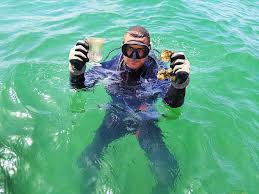Divers’ big glass haul in Bulgaria

Sofia: A total of 112 pieces of glass, both intact vessels and fragments, have been found by underwater archaeologists in Chengene Skele Bay in the Black Sea off south-eastern Bulgaria. The artefacts were located in shallow water no more than 2.5m deep on a rocky bottom.
The finds have just been announced by the Regional Historical Museum (RHM) Burgas, which said that they had resulted from dives carried out in five areas of the bay by a National History Museum team led by Professor Ivan Hristov.
The discoveries follow those of more than 300 glass fragments and intact vessels in the bay during annual excavations in 2020 and 2021.
The glassware is thought to have been part of a cargo shed from a vessel wrecked on the reef during a storm. The archaeologists have been working on the theory that it originated in Murano, Venice between 1550 and 1650.
The divers hope eventually to find the remains of the boat or ship itself in the area with the greatest concentration of glass, where they also found traces of anchor-chains and, in depths of 1.5 to 5m towards the west of the bay, fragments of ceramics that appear to date to the late mediaeval and Renaissance period (14th-17th century AD).
In one of the five other areas under investigation the divers came across ancient Greek ceramic fragments, a small lead weight from the Roman era and a stone fishing weight. Another area yielded fragments of amphoras from late Antiquity and mediaeval times, as did another that also revealed later ceramics, from the 18th and 19th centuries.





